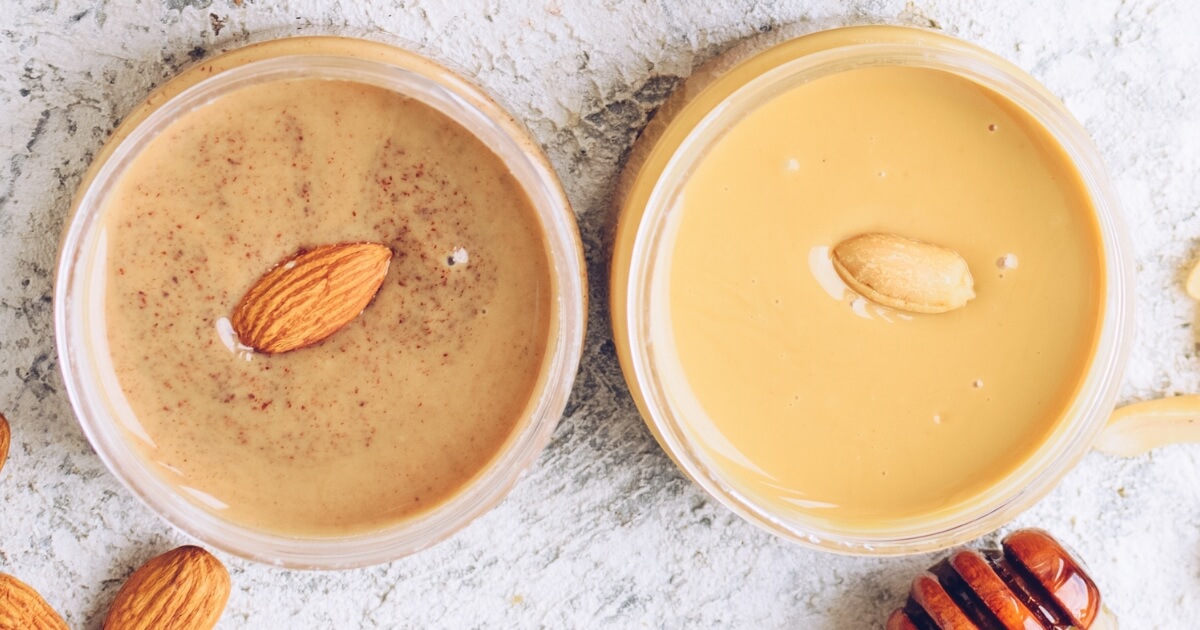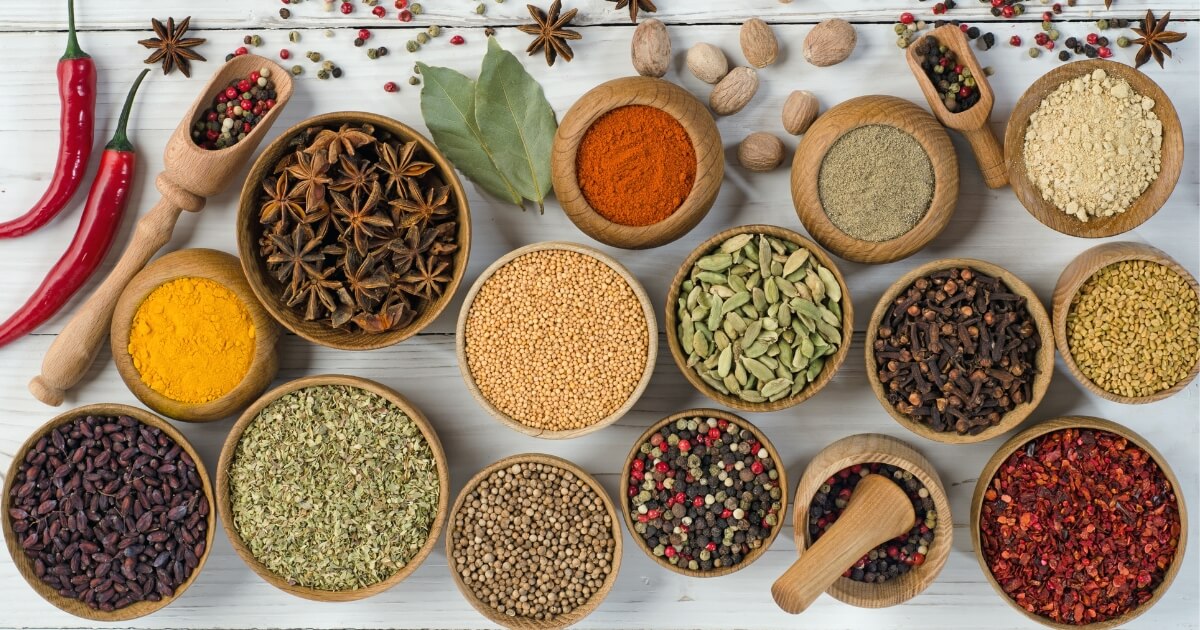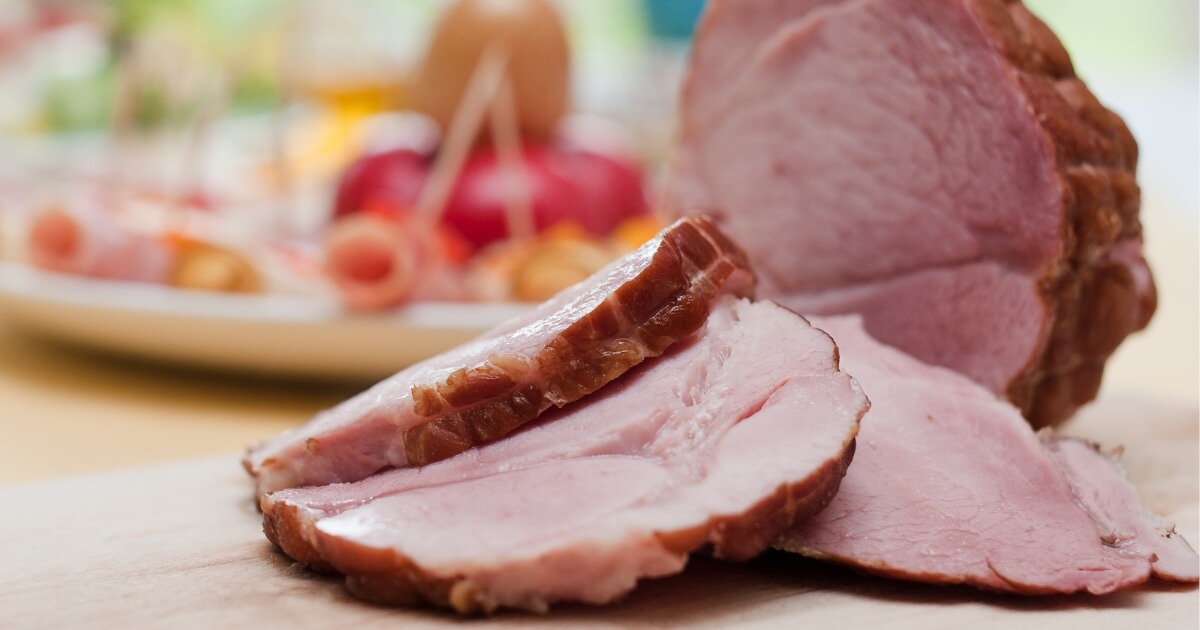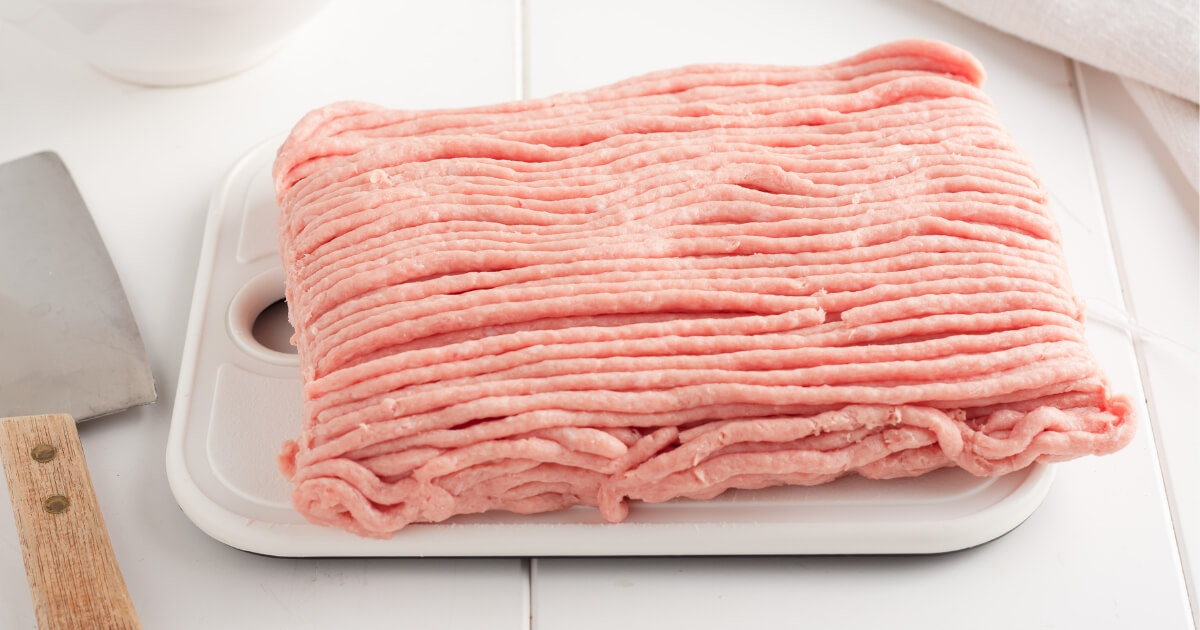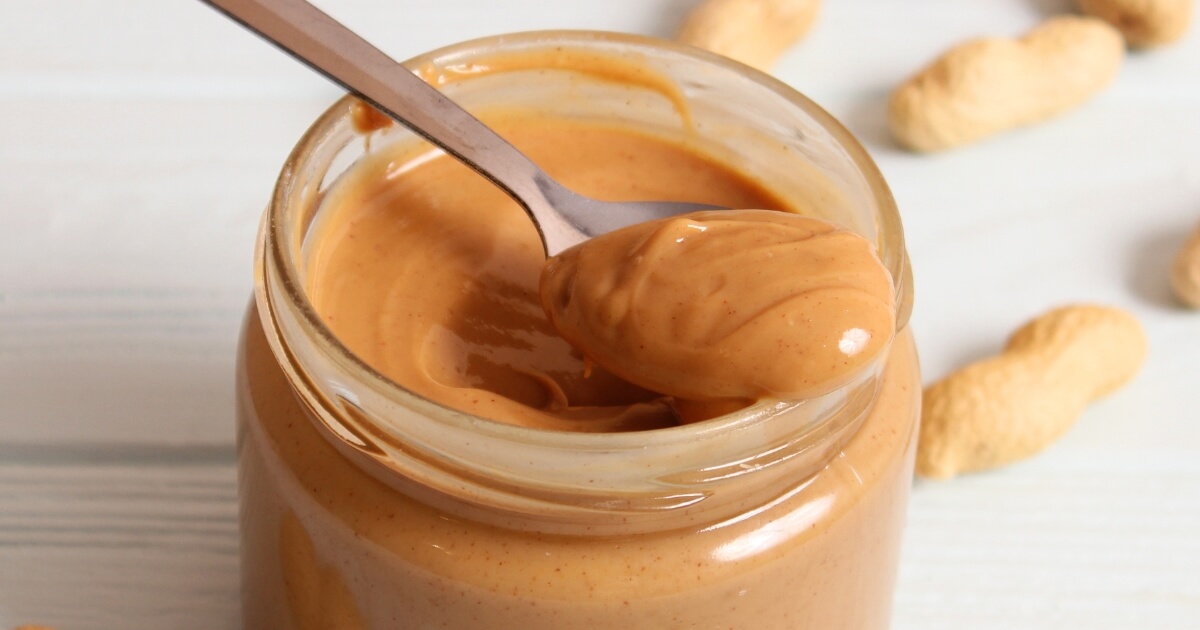Buying the best chicken at the grocery store is more than just grabbing the first package of chicken you see.
By examining the packaging, you’ll discover clues about freshness and quality.
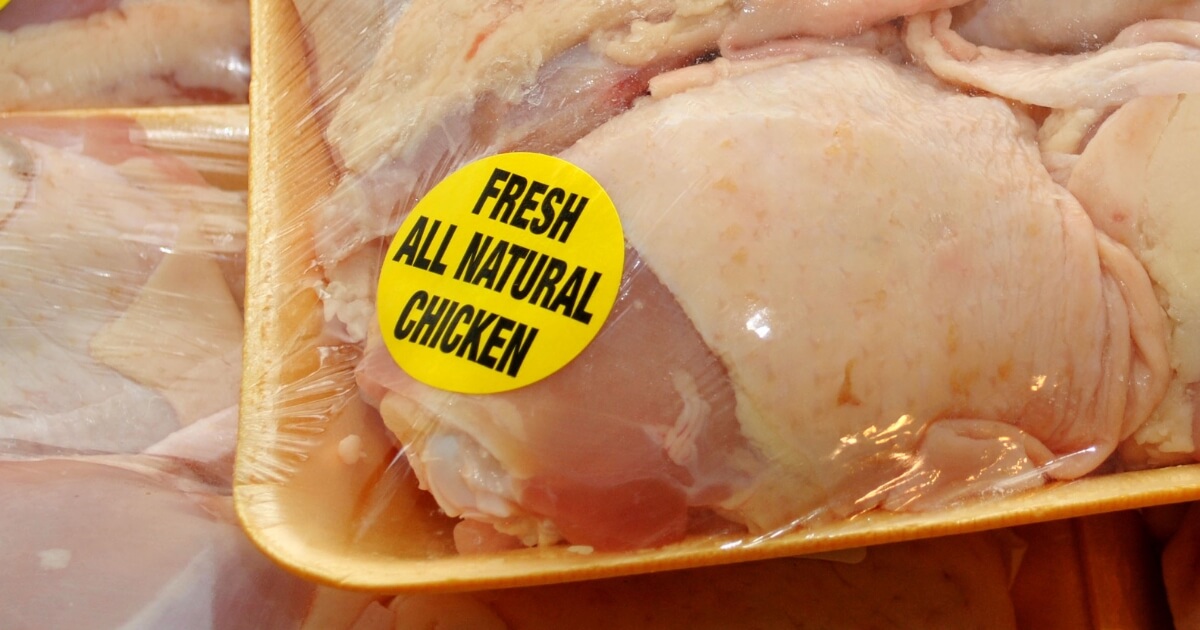
And knowing what to steer clear of, from unhealthy additives to signs of spoilage, ensures that you bring home chicken that’s both tasty and safe.
So let’s get into it! This guide will give you all you need to know to confidently navigate the poultry section on your next shopping trip.
Examine The Packaging
When you’re selecting chicken at the grocery store, the packaging is more than just a container. It can help you understand the product’s story.
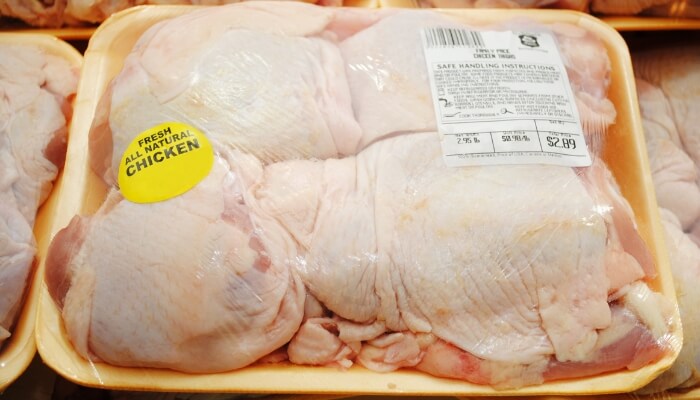
Here’s what to look for in different types of packaging materials:
- Plastic Wrapped: You’ll most commonly find chicken wrapped in clear plastic over a foam tray. While it allows you to see the product, be mindful of any leaks or tears, as they can indicate potential contamination.
- Vacuum-Sealed: Some chicken might be vacuum-sealed, a method that can extend freshness. This tight packaging is like a freshness lock, but again, check for any punctures or breaches in the seal.
- Recyclable or Biodegradable Packaging: If environmental concerns are on your radar, look for packaging labeled as recyclable or made from biodegradable materials. It’s a step towards a more eco-friendly purchase.
- Labels and Stickers: The packaging should include labels and stickers with vital information such as expiration dates, certifications, and handling instructions. These are like mini-guides, providing insights into the product’s quality and safety.
Read The Label
These labels provide insight into the chickens’ living conditions, diet, and treatment, allowing you to make choices that align with your preferences and values.
Here’s a breakdown to help you understand what they mean:
- Organic Chicken: Chickens raised under organic standards are given organic food and have access to the outdoors. They are raised without synthetic hormones or antibiotics.
- Free-Range Chicken: This label means that the chickens have some access to the outdoors, though the amount, duration, and quality of outdoor access can vary.
- Hormone-Free: By law, poultry cannot be given hormones, so this label might seem reassuring but is somewhat redundant. It’s still a common label you’ll encounter.
- Cage-Free: Cage-free chickens are raised without cages, but this doesn’t necessarily mean they have access to the outdoors. It’s more about the living conditions inside the facility.
Certifications
Certifications on chicken labels aren’t just decorative seals that may end up costing you more money.
Whether it’s organic practices, humane treatment, or non-GMO preferences, these certifications speak to different aspects of quality and ethics in food production.
Here’s a look at some common certifications:
- USDA Organic: This certification ensures that the chicken was raised following strict organic guidelines, including organic feed, no synthetic hormones, and access to the outdoors.
- Certified Humane: A program that ensures the chickens are raised with humane treatment, including proper diet, shelter, and natural behaviors. It’s like a promise of kindness in farming.
- Animal Welfare Approved: This certification takes it a step further, ensuring ethical treatment throughout the chicken’s life. It’s a stringent standard that reflects a high level of animal welfare.
- Non-GMO Project Verified: If avoiding genetically modified organisms is important to you, this certification ensures that the chicken was raised without GMO feed.
Expiration Dates
Checking the expiration date is a simple yet vital step in your grocery shopping routine. It’s like a seal of approval for freshness, taste, and safety.
Here’s why they’re so important:
- Freshness Guarantee: The expiration date is like a timeline for the chicken’s freshness. Consuming it before this date ensures that you’re enjoying the product at its best quality.
- Health and Safety: Ignoring the expiration date can lead to consuming spoiled or bacteria-laden chicken. It’s a risk that’s not worth taking, as it can lead to foodborne illnesses.
- Taste and Texture: Chicken consumed within its expiration date will have the best flavor and texture. Past this date, these qualities will deteriorate.
- Waste Reduction: You can reduce food waste by paying attention to expiration dates and planning your meals accordingly. It’s a way to be mindful of both your health and the environment.
Always make it a point to check this date so that the chicken you bring home is safe, delicious, and responsibly consumed.
Handling Instructions
When you pick up a package of chicken, you might notice some handling instructions on the label. These are essential guidelines to ensure both safety and quality chicken.
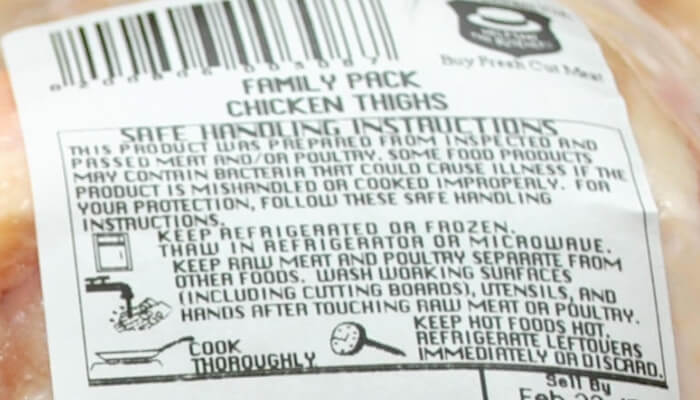
Here’s what you might find:
- Keep Refrigerated: This instruction is vital to maintain the chicken’s freshness. Storing it at the proper temperature helps prevent the growth of harmful bacteria.
- Use or Freeze by: Sometimes, you’ll see a date by which you should either use the chicken or freeze it. Following this date helps you enjoy the chicken at its best quality.
- Cooking Temperature: You should see guidance on cooking the chicken to a specific internal temperature. The USDA and CDC state that the internal temperature should be 165 ºF before eating.
- Thawing Instructions: If the chicken is frozen, there may be instructions on how to safely thaw it. Thawing it correctly is essential to maintain both texture and safety.
- Washing Warning: Many packages advise against washing raw chicken, as this can spread bacteria in your kitchen. It’s a counterintuitive but essential guideline to follow.
Misleading Labels
In the world of food labeling, not everything is as clear-cut as it seems. Some labels might sound appealing but can be confusing or even misleading.
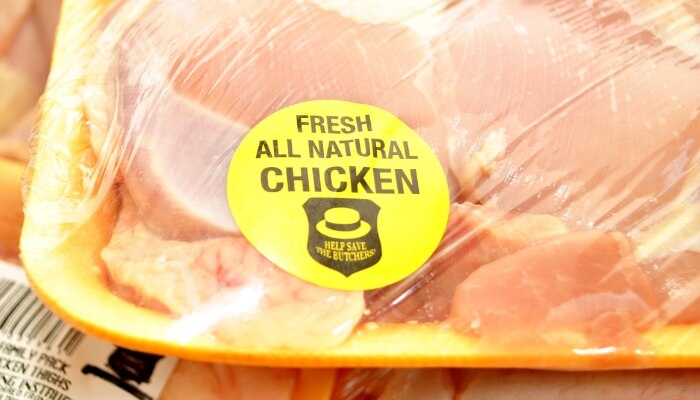
Here’s a look at some that might trip you up:
- “Natural”: This term can be quite vague, as no strict regulation defines what it means. It might imply that the chicken is minimally processed but doesn’t guarantee organic or humane practices.
- “Cage-Free”: While it sounds positive, “cage-free” only means that the chickens weren’t raised in cages. It doesn’t necessarily mean they had access to the outdoors or were raised under humane conditions.
- “No Hormones Added”: Since hormones in poultry are not allowed in poultry raising in the U.S., this label might seem reassuring but doesn’t distinguish the product from others.
- “Farm-Raised”: This label might conjure images of idyllic farm life, but it doesn’t provide specifics about farming practices. It’s a term that can be applied broadly without conveying clear information.
What to Avoid When Buying Fresh Chicken
Unhealthy Additives
When shopping for fresh chicken, it’s wise to be on the lookout for certain additives or preservatives that might not align with your desire for a natural and wholesome product.
Here’s what to watch out for:
- Sodium Phosphates: Often used to retain moisture, sodium phosphates can increase the sodium content in the chicken, which might not be suitable for those watching their salt intake.
- Artificial Flavorings or Colorings: If you’re aiming for a natural product, steer clear of chicken that lists artificial flavorings or colorings on the label. These additives don’t contribute to the nutritional value and might affect the taste.
- Preservatives: Some packaged chicken might contain preservatives to extend shelf life. If freshness and minimal processing are your priorities, look for labels that specify “no preservatives.”
- Added Sugars: Believe it or not, some chicken products, especially those that are pre-marinated, might contain added sugars. If you’re mindful of sugar intake, be sure to read the ingredient list carefully.
Damaged Packaging
When you’re on the hunt for fresh chicken, the packaging is like the first line of defense, protecting the product from contamination and preserving its quality.
Here’s why you should avoid chicken with damaged or compromised packaging:
- Risk of Contamination: Any tears, punctures, or leaks in the packaging can expose the chicken to harmful bacteria.
- Loss of Freshness: Compromised packaging can affect the chicken’s freshness. If the packaging is meant to be vacuum-sealed, any damage might allow air to enter, accelerating spoilage.
- Questionable Handling: Damaged packaging might indicate mishandling during transportation or stocking. It’s a sign that the product might not have been treated with the care it deserves.
- Environmental Factors: If the packaging has too much air inside, the chicken might have been exposed to fluctuating temperatures or other environmental factors that could affect its quality and safety.
Signs of Spoilage
Detecting spoilage in chicken isn’t just about reading labels. It’s also about using your senses to spot any red flags.
Here’s what to look for to ensure that your chicken hasn’t gone bad:
- Off-Color: Fresh chicken should have a pinkish hue. If you notice any grayish or greenish tints, it’s like a visual alarm bell, signaling that the chicken might be spoiled or have been kept too warm.
- Unpleasant Odor: Trust your nose. If the chicken emits a sour or unpleasant smell, it’s a strong olfactory cue that something’s amiss. Fresh chicken should have a mild, unoffensive scent.
- Slimy Texture: If the chicken feels slimy or tacky to the touch, it’s a tactile warning sign of potential spoilage. Fresh chicken should feel moist but not slippery.
- Exceeded Expiration Date: Always check the expiration date. If it’s past its prime, it’s like an official stamp of disapproval, indicating that the chicken might no longer be safe to consume.
- Excess Liquid: You’ll want to also check that there is not a lot of excess fluid in the package. This can be the result of spoilage and help harmful bacteria flourish.
Warm Temperatures
Here’s why temperature matters and some tips to keep in mind:
- Dangerous Bacteria Growth: Warm temperatures can be a breeding ground for harmful bacteria like Salmonella.
- Shopping Strategy: Make picking up chicken one of the last things you do. It’s like saving the best for last, ensuring that it stays cold and doesn’t spend unnecessary time in a warm shopping cart.
- Use a Cooler: If you have a long drive home, consider using a cooler with ice packs.
- Check Store Refrigeration: Pay attention to how the chicken is stored in the store. If it doesn’t feel cold to the touch, it might indicate improper refrigeration or a package of chicken that may have been put back after sitting in someone’s cart.
- Prompt Refrigeration at Home: Once home, promptly refrigerate the chicken so that it stays fresh until you’re ready to cook it.
Different Pre-Packaged Cuts Of Chicken
Whole Chicken
A whole chicken is like a blank canvas, offering endless culinary possibilities. Here’s why it’s a great choice:
- Versatility: From roasting to stewing, a whole chicken can be cooked in various ways. It’s like having multiple dishes in one package.
- Economical: Buying a whole chicken is often more cost-effective than individual cuts of chicken. It’s a budget-friendly option that doesn’t skimp on taste.
- Utilizing Every Part: With a whole chicken, you can utilize every part, including making broth from the bones. It’s like a zero-waste approach to cooking.
- Freshness Indicator: A whole chicken often retains its freshness longer. It’s a choice that prioritizes both quality and creativity in the kitchen.
Chicken Breast
Chicken breasts are like the all-stars of the chicken world, popular and versatile. Here’s how to choose the best ones:
- Skin-On vs. Skinless: Skin-on breasts retain moisture during cooking, while skinless chicken breasts offer a leaner option. It’s about matching the cut to your recipe and preference.
- Size Matters: Look for evenly sized breasts for consistent cooking. It’s like synchronizing your cooking to ensure every bite is perfectly done.
- Color and Texture: Fresh breasts should be pink and firm to the touch. It’s a visual and tactile guide to quality.
Chicken Thighs and Legs
Thighs and legs are like the comfort zones of chicken cuts, juicy and rich in flavor. Here’s what to look for:
- Skin and Bone Structure: Depending on your recipe, you might prefer skin-on for flavor or skinless for a leaner dish. Bone-in adds depth to the taste, while boneless offers convenience.
- Size Consistency: Choose chicken thighs and legs that are similar in size for even cooking.
Chicken Wings
Chicken wings are like the fun-loving cousins in the chicken family, great for snacking and parties. Here’s how to pick the best:
- Look for Plumpness: Plump wings indicate more meat and a juicier bite. It’s like choosing the best players for your culinary team.
- Check for Freshness: Fresh wings should have a pinkish hue and a pleasant smell. It’s your sensory guide to a delicious wing experience.
Bone-in vs. Boneless: Compare and Contrast
The choice between bone-in and boneless chicken cuts is like choosing between two culinary paths, each with its own appeal:
- Bone-in: Offers more flavor and is often more moist. It’s like the traditional route, rich in taste and texture.
- Boneless: Provides convenience and quicker cooking times. It’s the fast track to a tasty meal without the obstacle of bones when eating.
Ground Chicken
Ground chicken is a versatile option, often used as a leaner alternative to ground beef or pork. It’s made by grinding chicken meat, sometimes including both white and dark meat.
Whether you’re whipping up burgers or meatballs or adding it to chili, ground chicken offers a lighter taste and texture. It’s like the all-rounder in the chicken cuts, ready to blend into various recipes, adding protein without overpowering the dish.
Just be sure to cook it thoroughly, as ground meat can be more susceptible to bacteria, making proper cooking essential for safety.
Types Of Chicken At The Grocery Store
Most grocery stores have a few varieties of whole chickens, and each has its own characteristics and best uses.
Here’s a quick rundown:
- Broilers: Young, tender, usually 7 weeks old, weighing 2.5 to 4.5 pounds. Ideal for grilling, broiling, or frying.
- Roasters: Richer flavor, 5 to 7 months old, weighing 5 pounds or more. Perfect for roasting, baking, or slow-cooking.
- Capon: Young male, weighing between 4 and 7 lbs. Typically roasted.
- Stewing/Baking Hen: Mature hen, less tender meat. Best used in long cooking stews.
- Cornish Hen: Smallest, weighing 1 to 2 pounds. Usually stuffed and oven-baked whole.
Specialty Breeds
Specialty or heritage breeds are rare but can offer unique flavors and characteristics:
- Heritage Breeds: Often raised in free-range environments, heritage breeds like the Plymouth Rock or Orpington offer distinct flavors.
- Specialty Breeds: Some stores might carry specialty breeds like Kosher or Halal chickens, catering to specific dietary requirements.
Final Thoughts
I can’t express how important safety is from the moment you buy chicken to preparing and serving it.
From checking the expiration dates to ensuring proper handling and storage, these precautions are essential to enjoy a delicious and wholesome meal without a trip to the emergency room.
Remember, the journey from the grocery store to your dining table is filled with opportunities to make wise choices that enhance the flavor, safety, and integrity of your meals.

